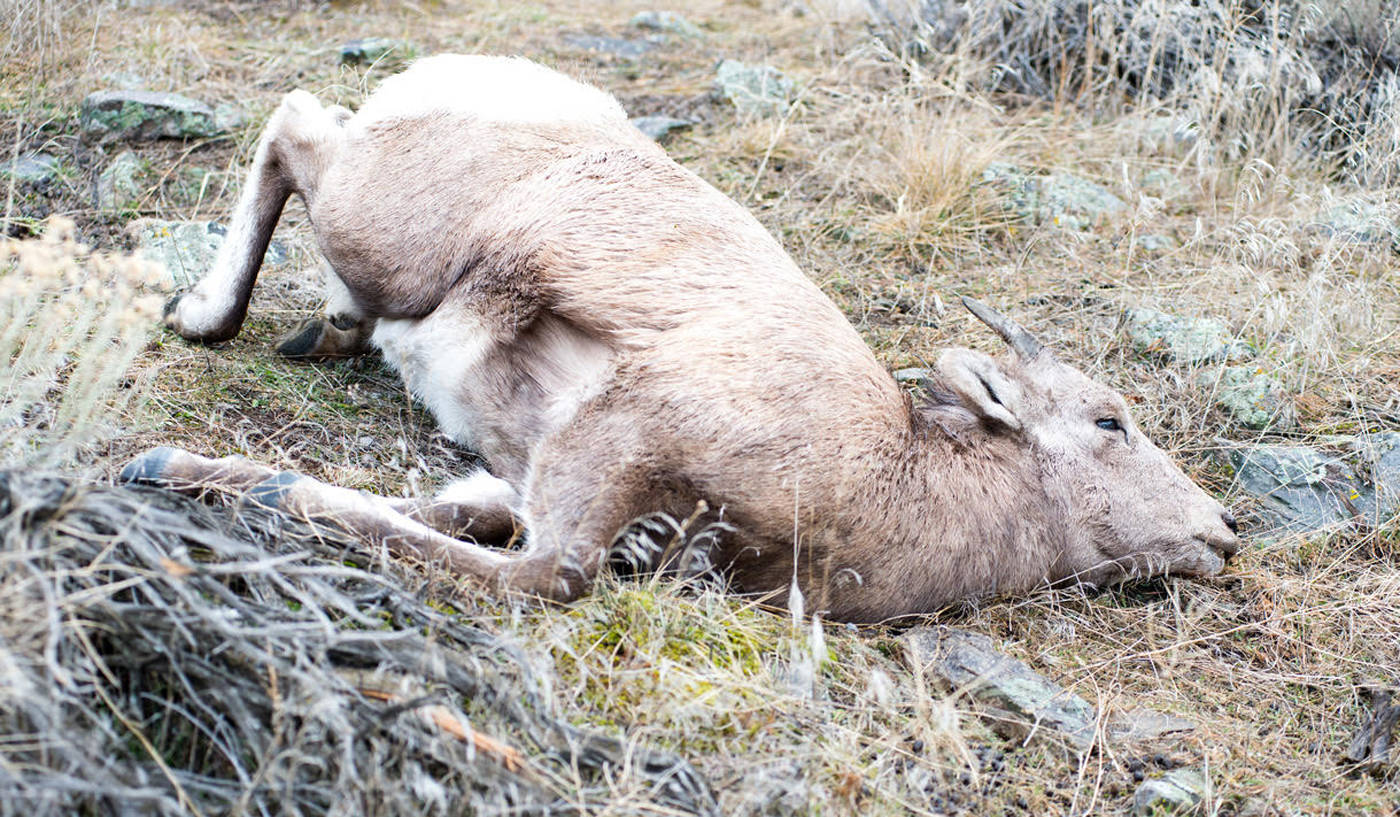Mycoplasma ovipneumoniae isn’t a commonly used name in Alaska but this little pathogen has been a topic of considerable discussion and debate recently. First off, Mycoplasma ovipneumoniae isn’t very fun to spell, so let’s just call it “Movi.”
Second, you’re probably wondering just what Movi is and why it’s important. It’s a bacterium that commonly lives in the upper respiratory tracts of domestic sheep and goats, often causing mild respiratory disease. Infections in adults are typically not severe but young individuals, those in poor physical condition, or those under stress may develop acute or fatal pneumonia.
Although Movi infection doesn’t always directly cause significant respiratory disease in domestic animals, it may predispose individuals to more serious illness. This is often caused by concurrent infections of Movi and other equally difficult-to-spell bacterial flora, such as Mannheimia haemolytica and Pasteurella multocida, species that naturally occur in the upper respiratory tracts of sheep and goats.
In healthy animals, these bacteria are typically held in check by the body’s normal immune defenses as antibodies destroy and slow the replication of these bacteria. Movi infection, however, can suppress normal defense mechanisms and increase demands on an animal’s immune system. Ultimately, this diminishes the animal’s resistance to Mannheimia and Pasteurella bacteria, facilitating the invasion of lung tissues and increasing the potential of fatal pneumonia.
So Movi can make domestic sheep and goats sick, but infected adults are often able to survive infections and can appear healthy. So what’s the big deal? Sounds like an agricultural issue rather than a wildlife issue anyway, right? Well, Movi becomes a bigger topic when it’s put in the context of wild sheep and mountain goat populations. Wild sheep and goats have little resistance to these bacteria that occur in healthy domestic sheep and goats.
Since Movi has not been documented in wild populations in Alaska, much of what we know about the effects of this bacterium comes from the Lower 48 and Canada. Movi has frequently been implicated in dramatic and large-scale die offs in Bighorn sheep populations throughout the western states, with some populations experiencing declines of 75% or more due to pneumonia outbreaks. Significantly reduced lamb survival is often commonly reported for years following outbreaks. Although we don’t know much about the effects of Movi on Dall sheep or mountain goat populations, it seems reasonable to expect similar outcomes if Movi is introduced into Alaskan populations.
Like most bacteria that thrive in respiratory tracts, Movi is transmitted via aerosol and direct contact with infected individuals, the same way people transmit colds to each other. The end result is that Movi can easily be transmitted between infected domestic animals and wild populations if they come in contact. Although infected domestic stock may appear healthy, they can still spread the bacteria to wild populations. In some cases, Bighorn sheep die-offs have occurred following interactions with domestic stock, further suggesting that Movi can be transmitted from domestic stock to wild populations.
In Alaska, the risk of transmission between domestic stock and wild populations is much lower than in the western states where domestic grazing commonly occurs in wild habitats. One potential route for transmission of these diseases into wild populations is via hunters using pack goats while hunting in alpine habitats, which is why this activity is not allowed in Alaska. The risk of transmission between livestock near residences and wild populations in Alaska is currently unknown but interactions do occur. Given the potentially devastating impacts that might result from introductions, however, monitoring the prevalence and distribution of Movi in both domestic and wild populations throughout Alaska is certainly warranted.
As part of continued state-wide monitoring, mountain goats captured and fitted with radio-collars on the Kenai Peninsula during 2017 were tested for Movi. All goats tested were negative for Movi but continued monitoring is necessary, particularly on the Kenai Peninsula where the risk of introduction is greater than in many other parts of Alaska.
The bottom line? Prevention is key. So interest groups from the agricultural community, private owners, state and federal agencies, and other stakeholders are currently working to develop a plan to monitor Movi in domestic stock, with the goal of preventing the transmission of this and other harmful micro-organisms to wild sheep and goat populations in Alaska.
Dom Watts is a Wildlife Biologist at Kenai National Wildlife Refuge. Find more information about the Refuge at http://www.fws.gov/refuge/kenai/ or http://www.facebook.com/kenainationalwildliferefuge.

